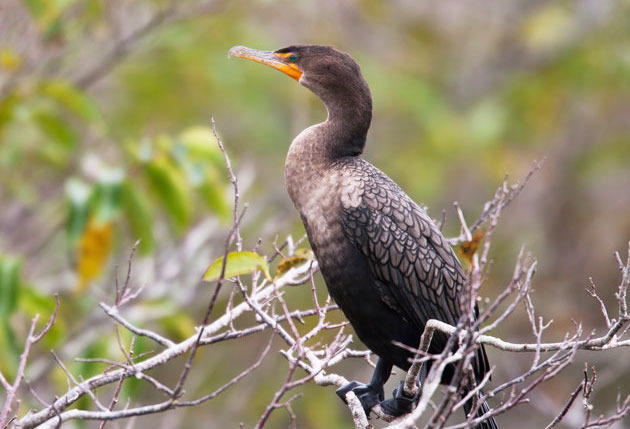In 2014 the South Carolina Department of Natural Resources sparked controversy when it permitted a select group of 1,100 volunteers to shoot double-crested cormorants—federally protected, fish-eating aquatic birds—on lakes Marion and Moultrie for a one-month period, a decision that ultimately claimed more than 11,500 of the birds.
Cormorants are not typical hunting quarry, but the DNR believes their unmanaged populations overfeed on and threaten fish. This spurred the department to curb the bird’s numbers, and this month the state opened its second month-long period for shooting cormorants. Five hundred and twenty South Carolinians registered to participate, which further aroused concerns about whether the species should be removed from area waters.
As The Post and Courier notes, cormorants were once abundant throughout the palmetto state, but they suffered a major die-off in the 1970s from exposure to commercial insecticides. This prompted the federal government to protect the species under the Migratory Bird Treaty Act, which forbids the hunting or capture of threatened migratory fowl. Over the following years, cormorants gradually rebounded, and area fishermen and DNR officials now believe the birds negatively affect aquatic life and recreational fishing.
The US Fish and Wildlife Service endorses the managed removal of cormorants from South Carolina and other states under a federal depredation order, but critics believe such action is unnecessary and unfounded.
The primary concern is that cormorants remain protected under the Migratory Bird Treaty Act and similar legislation, though the FWS has identified the species as a nuisance and lawfully authorized reducing its numbers. In response, a group called Public Employees for Environmental Responsibility is suing FWS for permitting 24 states east of the Mississippi River, including South Carolina, to kill off cormorant. The group claims that allowing state agencies to shoot the birds violates the National Environmental Policy Act by way of championing a significant environmental measure with little understanding of its effect.
In conjunction, as The State explains, critics argue that biologists have yet to accurately determine how much or how little cormorants affect area fisheries. While reports speculate that 25,000 of the birds now inhabit Marion and Moultrie lakes, no conclusive analysis has determined if the species poses an eminent or substantial threat to aquatic life in these areas or elsewhere.
In an April 2014 report, FWS itself notes, “The wide range of biotic and abiotic factors that impact fish populations and the complexity and challenges in studying aquatic systems make it difficult to demonstrate a cause and effect relationship between [cormorant] predation and fish populations.”
Despite this admission, FWS seems confident that cormorants harm fisheries, and notes in the same report that the managed removal of the birds benefits fish, wildlife, and vegetation, as well as minimizes negative impacts on recreational, fishing-dependent economies.
As the debate continues, finding a solution that benefits anglers, cormorants, and game fish seems increasingly convoluted. A clear answer may come only once there are too few cormorant or too few fish, whichever comes first. —JR Sullivan
Be sure to subscribe to our daily newsletter to get the latest from Sporting Classics straight to your inbox.
Cover image: Michael Stubblefield/Thinkstock

